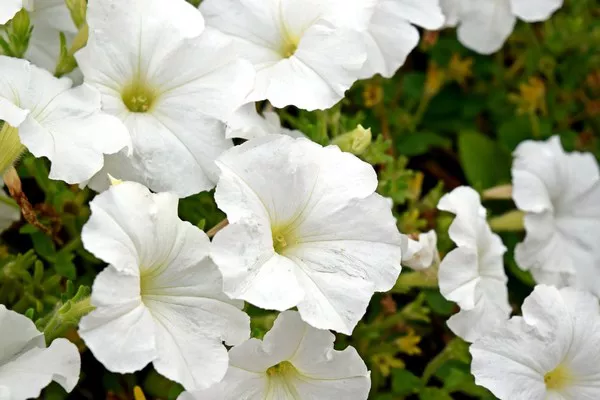Pressing white flowers is a delicate art that allows us to capture the ethereal beauty of these blooms in a lasting form. However, one common challenge when pressing white flowers is preventing them from turning brown during the preservation process. In this comprehensive guide, we will explore various techniques and tips to ensure your white flowers remain pristine and maintain their natural splendor.
1. Choosing the Right White Flowers to Press
Before diving into the pressing process, it’s crucial to select the right white flowers. Opt for blooms that are freshly picked, free from blemishes, and at their peak of beauty. Delicate flowers such as daisies, lilies, and roses are popular choices for pressing. Selecting the right flowers from the outset is the first step in ensuring that your pressed white flowers will maintain their pristine appearance.
2. Preparing Your White Flowers for Pressing
Proper preparation of white flowers is key to preserving their color. Begin by gently removing any excess moisture from the petals using a paper towel or a blotting sheet. Be sure to handle the flowers with care to avoid bruising or damaging them. The moisture removal process is crucial in preventing the browning of your white flowers when pressed.
3. Choosing the Pressing Method for White Flowers
There are various methods for pressing white flowers, and your choice can significantly impact the results. One of the most common methods is using a flower press. Flower presses consist of two wooden or plastic frames with layers of absorbent paper and cardboard in between. Arrange your white flowers between these layers, ensuring that they are not touching. Alternatively, you can use heavy books, parchment paper, and weights to press the flowers. Whichever method you choose, the key is to distribute pressure evenly and avoid overlapping the flowers to prevent browning.
4. The Importance of Timing in Pressing White Flowers
Timing is crucial when pressing white flowers. The quicker you press them after picking, the better the results. White flowers are more susceptible to browning as they age, so aim to begin the pressing process as soon as possible after harvesting or purchasing the blooms. This timely action can help maintain the purity of their color.
5. Proper Drying and Ventilation for White Flowers
After arranging your white flowers in the press or between book pages, ensure they are placed in a dry, well-ventilated area. Adequate airflow is essential for preventing the development of mold and mildew, which can contribute to browning. Regularly check the flowers during the drying process to ensure that they are drying evenly and without any signs of discoloration.
6. Consider Using Silica Gel for White Flowers
Silica gel is a desiccant that can aid in preserving the color of your white flowers. Carefully place your white flowers in a container filled with silica gel, making sure they are completely covered. Seal the container and allow the silica gel to absorb the moisture from the flowers over several days. This method can help maintain the flowers’ natural whiteness and prevent browning during the pressing process.
7. Minimize Exposure of White Flowers to Light
Exposure to light, particularly direct sunlight, can cause white flowers to brown. When drying and pressing your white flowers, store them in a cool, dark place to reduce the risk of discoloration. This precaution will help ensure that your pressed white flowers maintain their pristine appearance.
8. Choosing the Right Display Method for White Flowers
Once your white flowers are successfully pressed and preserved, it’s essential to select an appropriate display method. Consider using acid-free adhesive or double-sided tape to affix your pressed white flowers onto archival paper or cardstock. These materials are less likely to contribute to browning and will help maintain the flowers’ purity of color.
9. Using UV-Protective Glass of White Flowers
When framing your pressed white flowers, opt for UV-protective glass to shield them from harmful ultraviolet rays. UV rays can cause fading and browning over time. Investing in UV-protective glass will help ensure that your pressed white flowers remain vibrant and beautiful for years to come.
10. Proper Storage and Maintenance of White Flowers
To preserve your pressed white flowers for the long term, store them in a cool, dry place away from direct sunlight and humidity. Periodically inspect your pressed flowers for any signs of discoloration or deterioration. If you notice any issues, consider replacing the frame or display case to maintain the integrity of your white flowers.
Conclusion
Pressing white flowers can be a rewarding endeavor, allowing you to capture their timeless beauty in a lasting form. To ensure your white flowers remain pristine and do not turn brown during the preservation process, it’s essential to choose the right flowers, handle them with care, use proper pressing techniques, and pay attention to timing, drying, and ventilation. Consider using silica gel for added protection and be mindful of exposure to light. When displaying your pressed white flowers, opt for UV-protective glass and store them in a suitable environment. By following these guidelines, you can enjoy the elegance of your white flowers for years to come, their pristine beauty preserved for all to admire. Pressing white flowers is an art, and with the right techniques, you can create timeless pieces that capture the essence of nature’s purity.


